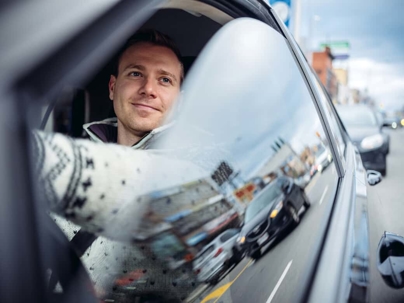April is Distracted Driving Awareness Month and, while the National Safety Council has postponed this year’s campaign in response to the current COVID-19 pandemic, it’s still a good time to be aware of distracted driving and its dangers. There are still plenty of things everyone can do to help prevent distracted driving and keep our roads safe. Keep reading to learn more about distracted driving, how dangerous it really is, and how you can take part in promoting safer driving behaviors to protect yourself and others on the road.
What Exactly Is Distracted Driving?
We all know we shouldn’t be looking at our cell phones or texting while driving, but this is far from the only type of distracted driving. Put simply, any time your attention is diverted from the task at hand—driving—you are distracted.
According to the Centers for Disease Control and Prevention (CDC), there are three different types of distractions drivers face:
- Visual Distractions: Visual distractions are anything that require us to remove our eyes from the road, even temporarily. Looking at a cell phone, responding to a text or email, looking over at a passenger, or even glancing down to change the radio station are all examples of visual distractions.
- Manual Distractions: Manual distractions include anything that makes you remove your hands from the steering wheel, such as reaching over to grab something that fell off the front seat, reaching into the back to pick up a toy your child dropped, or eating while driving.
- Cognitive Distractions: A cognitive distraction is anything that causes you to take your mind off driving. Daydreaming, dwelling on a recent conversation, talking on a hands-free device, or even “zoning out” (sometimes referred to as “highway hypnosis”) are all examples of cognitive distractions.
Many Californians drive so frequently they can forget just how serious a responsibility it is. But the fact remains, when you get behind the wheel, you are responsible for operating a large vehicle at high speeds; this requires your full attention and is not something that should ever be taken lightly.
The True Cost of Distracted Driving
Believe it or not, distracted driving is one of the leading causes of traffic accidents and crash-related fatalities in the United States. According to the National Highway Traffic Safety Administration (NHTSA), approximately 400,000 people were involved in motor vehicle accidents with a distracted driver in 2018. And, even more alarming, distracted driving was the cause of 2,841 traffic-related deaths that same year.
Did you know:
- Studies have proven that distracted drivers are just as impaired as drunk drivers
- It takes about 5 seconds to send a text; if you’re driving at 55 mph, that’s like driving a full football field with your eyes closed
- Texting while driving makes you 23 times more likely to be involved in a crash or near-miss
- Every day, approximately 9 Americans are killed in distracted driving accidents and another 1,000 are injured
While many people believe that answering a quick text or eating while driving on a road trip are no big deal, the statistics don’t lie. Distracted driving is incredibly serious, and the risk is enormous.
What’s the Best Way to Stay Safe?
The answer is simple: just drive! If you’re behind the wheel, focus on the road; eliminate distractions to help keep yourself and others safe.
Here are some easy tips for preventing distracted driving:
- Leave Your Cell Phone Far Out of Reach: The best way to make sure you’re not tempted to look at your phone or respond to a text is to make sure it’s put away somewhere where you can’t get to it. Leave it in a bag or purse in the backseat or put it in the glove compartment.
- Set Up an Auto-Response on Your Phone: Hate the feeling of knowing someone has texted or emailed you but you haven’t responded? Most phones have the option to set up an auto-response. This lets the person know you are currently driving and will get back to them as soon as you’ve arrived at your destination.
- Keep Your Phone on Silent: Turning off the ringer on your cell phone means you won’t hear when someone tries to call, email, or text you. You also won’t hear social media notifications, meaning you’ll be less tempted to look at your phone.
- Stop to Eat: Maybe you have a long commute, so you’re always eating a quick breakfast behind the wheel, or maybe you tend to eat lunch as you drive to your next appointment. It’s time to break the habit! Eat before you leave the house or once you’ve arrived at your destination—we promise you’ll enjoy your meal more!
- Pull Over When Necessary: If you absolutely HAVE to answer a text message or reach back to pick up your daughter’s toy to get her to stop screaming, safely pull over first. Make sure you only pull over where it’s allowed and, if you’re traveling on a highway, take the next exit before attempting to stop your vehicle on the side of the road.
Most of all, remember: when you’re driving, make sure your full focus is on the road. Chatty passengers, restless kids, or a song you can’t stand suddenly playing on the radio can’t all be prevented—but being distracted while you drive can.
To learn more, including how the Law Offices of Larry S. Buckley can help you if you were involved in an accident with a distracted driver, contact us today.

